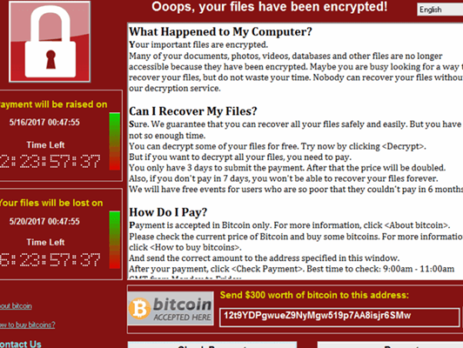5 Tips to Protect Your Organization in the Wake of WannaCry Ransomware
The WannaCry ransomware, also known as WCry or WanaCrypt0r, sent shockwaves through the world. Beginning on Friday, May 12th 2017, organizations spanning verticals including healthcare, telecom, and many others were affected by this nefarious infection
Enterprise security, endpoint protection, and best practices are keys to success
by Peter Redmer
The WannaCry ransomware, also known as WCry or WanaCrypt0r, sent shockwaves through the world. Beginning on Friday, May 12th 2017, organizations spanning verticals including healthcare, telecom, and many others were affected by this nefarious infection, rendering computers inoperable and files encrypted. Prague-based security company Avast, for example, reported 250,000 blocked attempts since the beginning of the attack. Many others weren’t so fortunate.
This infection was particularly cunning due to its use of an exploit called ETERNALBLUE, to which unpatched Windows systems may have been vulnerable. WannaCry spread rapidly due to its ability to spread to other network devices with no user interaction, leaving companies crippled.
There has been a surge of interest in cybersecurity since. Magenium can help reduce cost and risk through effective prevention and remediation strategies as well as security education programs. While no single method of intrusion protection can prevent 100% of attacks, there are key areas on which companies can focus to protect their organization from ransomware and other cyberattacks.
1 – Have an effective backup strategy. Leverage your IT department or service provider to put a detailed, reliable backup solution in place to maintain on-site and off-site (such as Azure) backups, allowing your organization to retain and restore valuable assets in the wake of a cyberattack.
2 – Employ firewalls and anti-spam. These cyberattacks are often delivered through clever phishing campaigns, meant to ensnare users who click on a legitimate-looking email. Then, they are either led to enter credentials which are then harvested, or a malware payload is delivered. Effective protection at the firewall — as well as integrated protection to help filter out malicious emails — can stem the flow.
3 – User education. Perhaps one of the most important parts of readying your company against cyberattacks is comprehensive user education, in a way that your employees can understand and implement. The terms and jargon can be confusing – how is phishing different from ransomware? What is a cryptoworm? How do I know what's legitimate and what's not? What can I do to prevent from being phished or infected?
4 – Keep your servers and workstations up to date. WannaCry spread so quickly largely in part due to machines that were not patched for the vulnerability. Keeping Windows servers and workstations up-to-date with the latest security patches can help your organization stay protected against attacks.
5 – Employ effective, next-generation endpoint protection. While no endpoint protection solution is 100% effective, it's crucial as a part of a layered security strategy. It's key to select a software package that not only offers ease of deployment and management, but also offers advanced protection that goes beyond the basics. Many solutions offer intelligent, next generation IDP (intrusion, detection, and protection) methods powered by AI, behavioral analysis, and machine learning that can detect and stop new and emerging threats.
Talk to Magenium today to see how we can help your company save money and reduce risk on your cybersecurity strategy.
